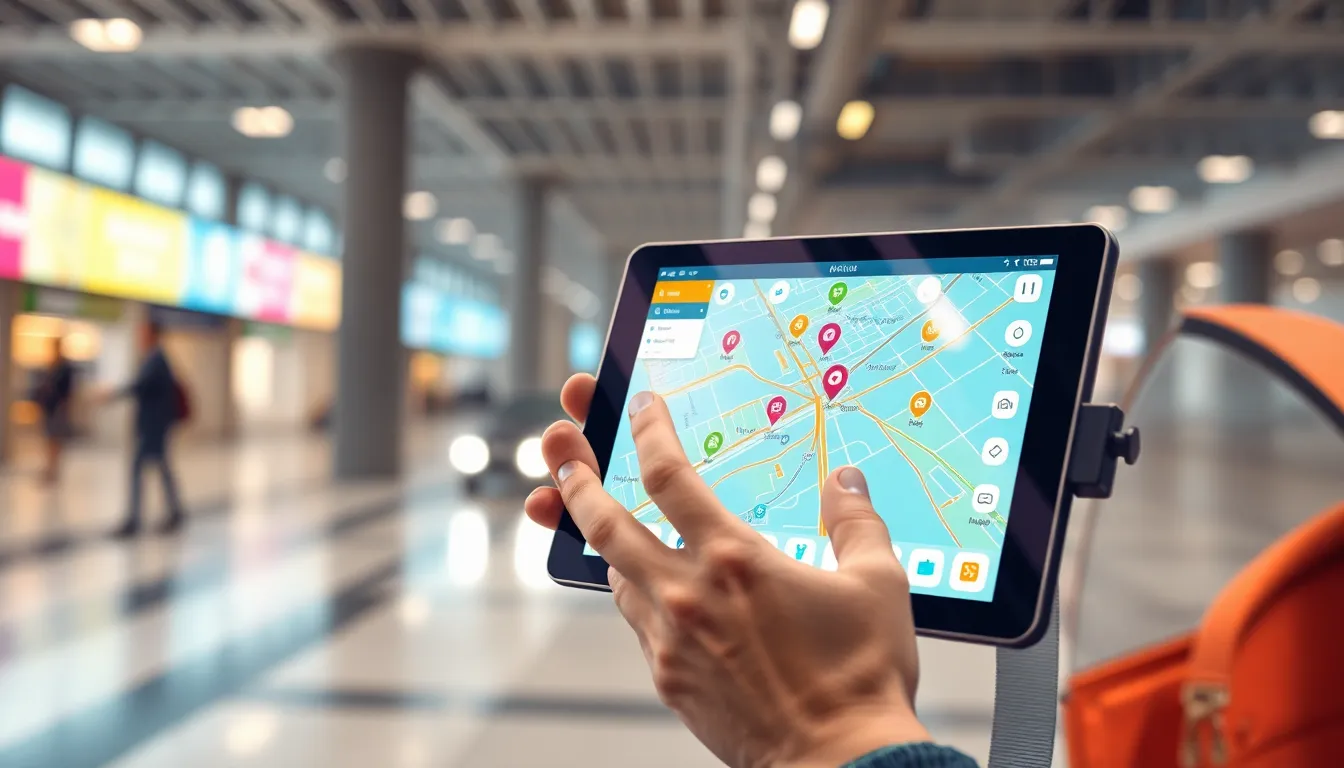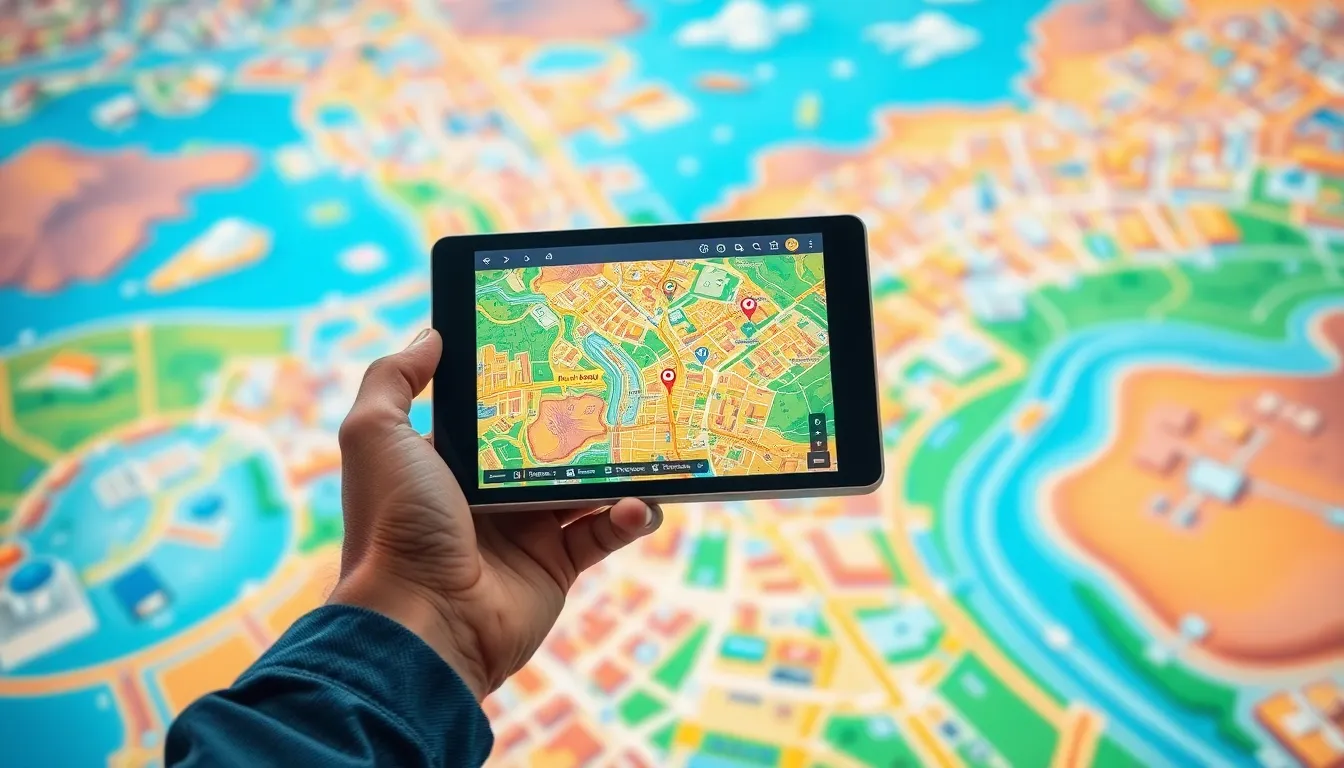Table of Contents
ToggleIn the ever-evolving world of Clienage9, maps have become the unsung heroes of navigation and exploration. Imagine trying to find your way through a digital labyrinth without a trusty map—it’s like searching for a needle in a haystack, but the haystack is on fire. Maps in Clienage9 not only guide users through its intricate landscapes but also add a dash of adventure to the experience.
Overview of Maps in Clienage9
Maps in Clienage9 serve as critical resources for navigation. Users rely on these maps to traverse the diverse digital landscapes. Various map styles exist, each tailored to different user needs. Terrain maps highlight geographical features, while street maps focus on navigation within urban areas.
Interactive features enhance the overall experience. Users can zoom in or out to obtain precise details or broader views. Location markers pinpoint specific interests such as landmarks and points of interest. Filters allow customization based on preferences like nearby restaurants or parks.
Data layers offer additional insights. Users can view demographic information or traffic conditions, providing valuable context during exploration. Collaboratively, these features help users interact meaningfully with their surroundings.
Accessibility remains essential in Clienage9. Maps can integrate voice commands or touch gestures, facilitating ease of use. Additionally, offline capabilities ensure that maps remain functional even without internet connectivity.
Frequent updates keep the content relevant. Regular feedback from users leads to improvements in map accuracy. This iterative process helps Clienage9 stay aligned with user expectations.
Engagement with maps leads to a heightened sense of adventure. Exploring new territories becomes an enjoyable experience, transforming navigation into a journey of discovery. Overall, maps in Clienage9 play an invaluable role in enhancing the digital navigation experience.
Features of Maps in Clienage9

Maps in Clienage9 feature advanced technology that elevates digital navigation. User engagement significantly improves through various interactive elements and intuitive designs.
User Interface
The user interface prioritizes clarity and ease of use. Navigation panels feature clearly labeled categories, enhancing user experience. Color-coded elements guide users through specific features, such as location markers and route planners. Accessibility options include large icons and adjustable text, making maps usable for everyone. Customization options allow users to personalize their viewing experience, ensuring relevant information is readily accessible. Visual hierarchy promotes effortless navigation through menus, fostering quick interaction with tools and features.
Navigation Tools
Navigation tools in Clienage9 offer precision and flexibility. Users can zoom in and out seamlessly, adjusting their view based on needs. Directional indicators provide real-time guidance, facilitating efficient travel. Points of interest display relevant details when selected, enhancing exploration. Additionally, integrated search functions allow users to locate specific destinations instantly. Traffic overlays update users on current conditions, optimizing travel routes. Offline access enables navigation without internet, ensuring users remain connected even in remote areas.
Benefits of Using Maps in Clienage9
Maps in Clienage9 enhance user interaction, making navigation intuitive and engaging. Various features promote seamless exploration across digital environments.
Enhanced User Experience
Interactive elements significantly improve the user experience within maps in Clienage9. Users can zoom in and out, allowing for detailed views of specific areas. Customizable filters cater to individual preferences, highlighting points of interest aligned with user interests. Voice commands and touch gestures simplify interaction, promoting accessibility for all users. Frequent updates ensure that maps remain accurate and relevant, addressing user feedback efficiently. Overall, these enhancements create an adventurous atmosphere, transforming the act of navigation into an exciting journey.
Increased Efficiency
Efficiency stands out as a fundamental advantage of using maps in Clienage9. Seamless zooming features provide instant access to crucial information. Real-time directional indicators guide users effortlessly to their destinations. Integrated search functions streamline locating specific places, minimizing time spent navigating. Additionally, traffic overlays keep users informed about current conditions, further optimizing routes. Offline access ensures functionality remains intact, even in areas with limited connectivity. This combination of features maximizes productivity, allowing users to focus more on exploration and less on the logistics of navigation.
How to Access Maps in Clienage9
Accessing maps in Clienage9 is straightforward. Users can locate maps on the main dashboard. The visibility of the map feature simplifies navigation, encouraging exploration. Direct interaction with the map interface begins with tapping the designated map icon.
Customization options enhance the experience. Users can toggle between different map styles, including terrain and street views. Each style provides unique insights into the environment, whether one navigates urban or natural landscapes. Filtering settings can reveal specific points of interest, making exploration more focused.
Voice commands can facilitate hands-free navigation. This feature offers convenience while navigating through complex areas. Touch gestures also provide additional access methods, allowing for seamless zooming and panning across the map. These interactive elements contribute to a fluid user experience.
Maps in Clienage9 synchronize with real-time data. Users benefit from live traffic updates that inform better route choices. Demographic layers offer insights, enhancing the overall understanding of the area being explored. Accessibility features ensure that all users can navigate without difficulty.
Offline capabilities add an extra layer of flexibility. Downloading maps in advance allows users to explore without internet connection. This is particularly beneficial in remote regions where connectivity might be limited. Map updates frequently occur, reflecting user feedback, which ensures that information remains current and accurate.
Once users begin utilizing the mapping features, they find the intuitive layout promotes engagement. User-friendly navigation panels display clearly defined categories and color-coded elements. The thoughtful design of the interface makes it easy to locate desired features.
Finding destinations becomes efficient with integrated search functions. Users can quickly search for specific locations, minimizing navigation time. Enhanced user interaction not only makes navigation more engaging but also transforms routine journeys into exciting explorations.
Maps in Clienage9 are more than just navigation tools; they’re gateways to exploration and adventure. By offering customizable features and real-time data, these maps empower users to tailor their journeys to their unique preferences. The integration of advanced technology ensures that navigating complex digital landscapes is both intuitive and engaging.
With accessibility at the forefront, users can easily interact with maps using voice commands and touch gestures. This commitment to user experience fosters a deeper connection with the digital environment. As Clienage9 continues to evolve, the role of maps will undoubtedly expand, enhancing the way users explore and engage with their surroundings.




